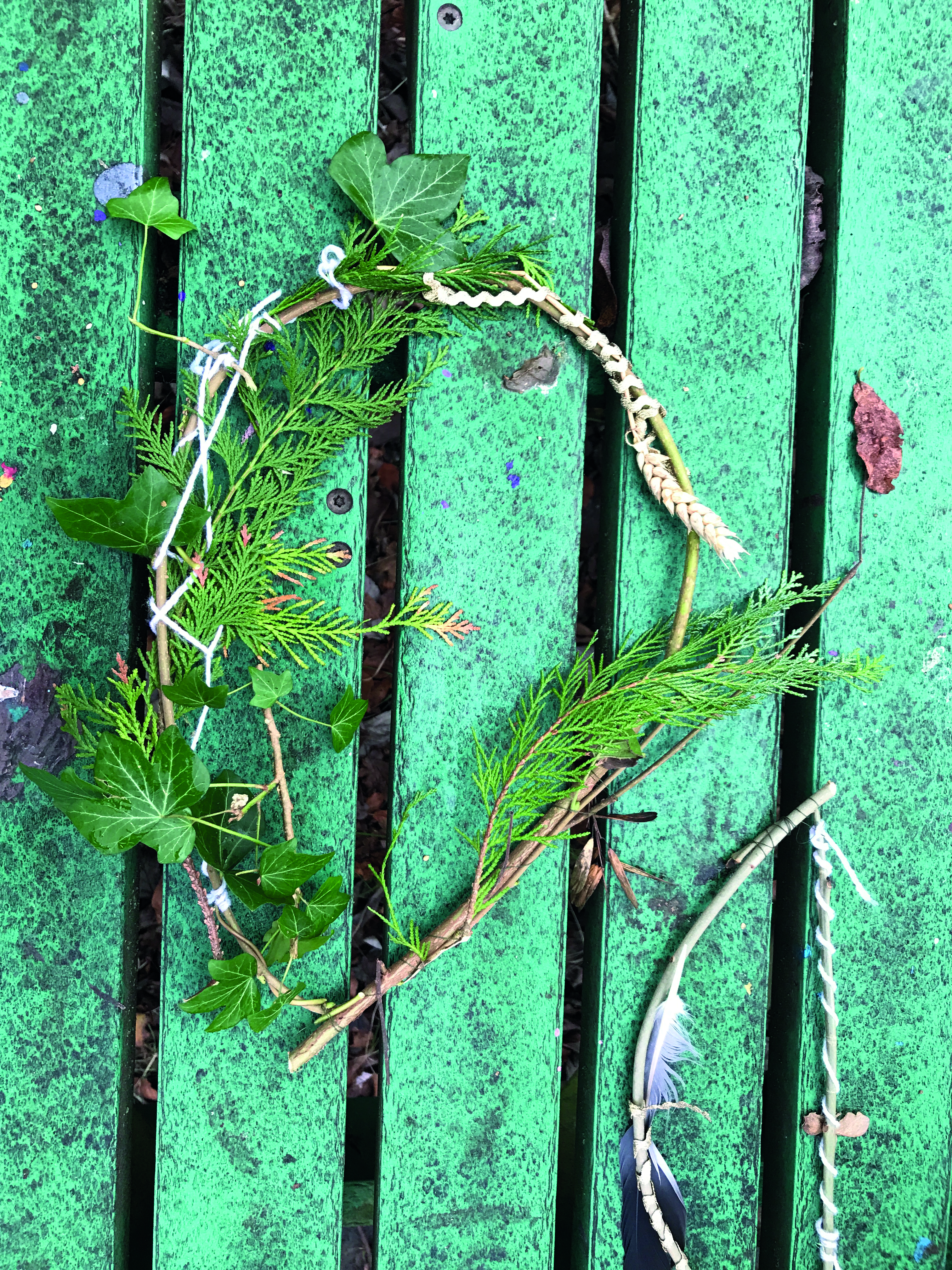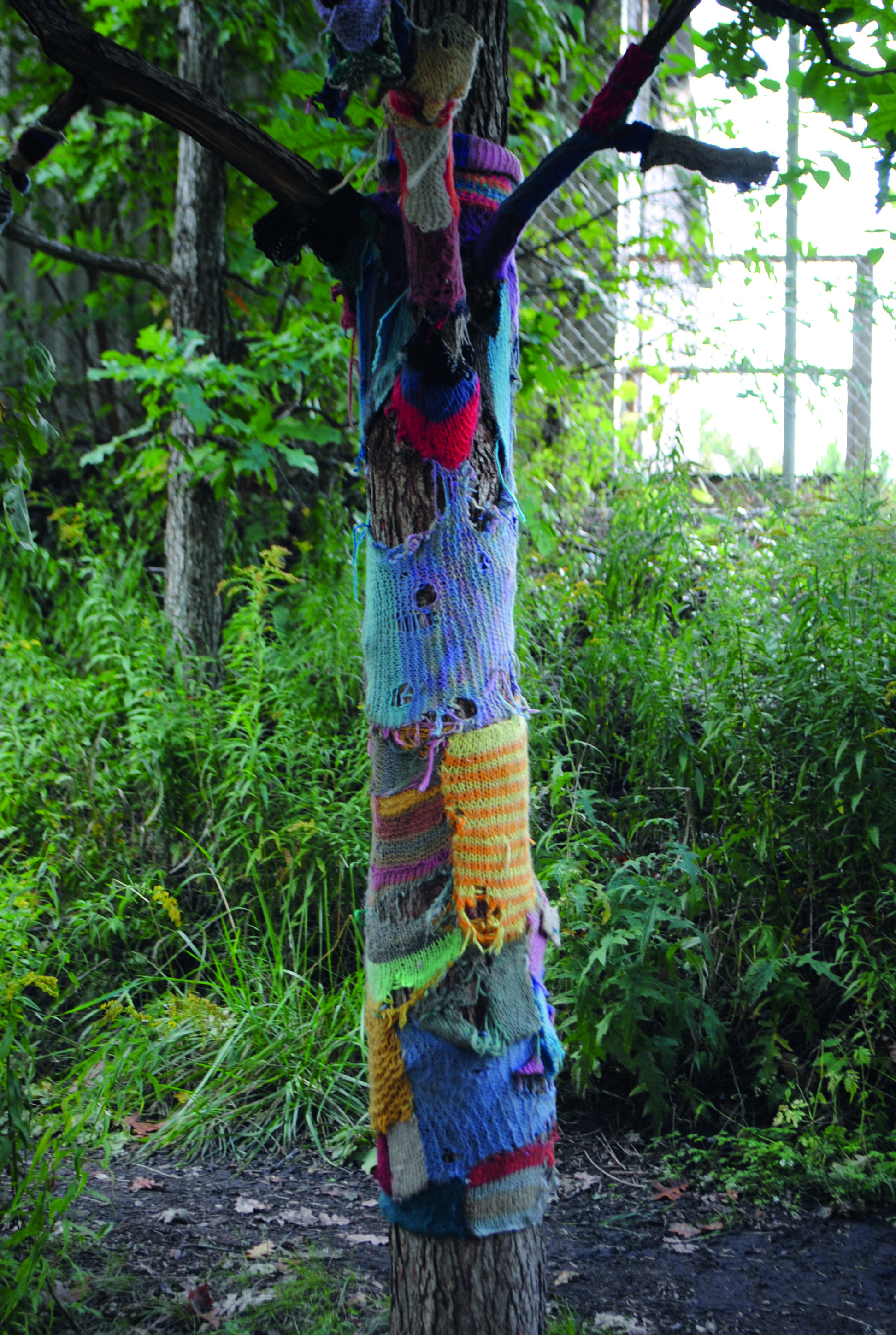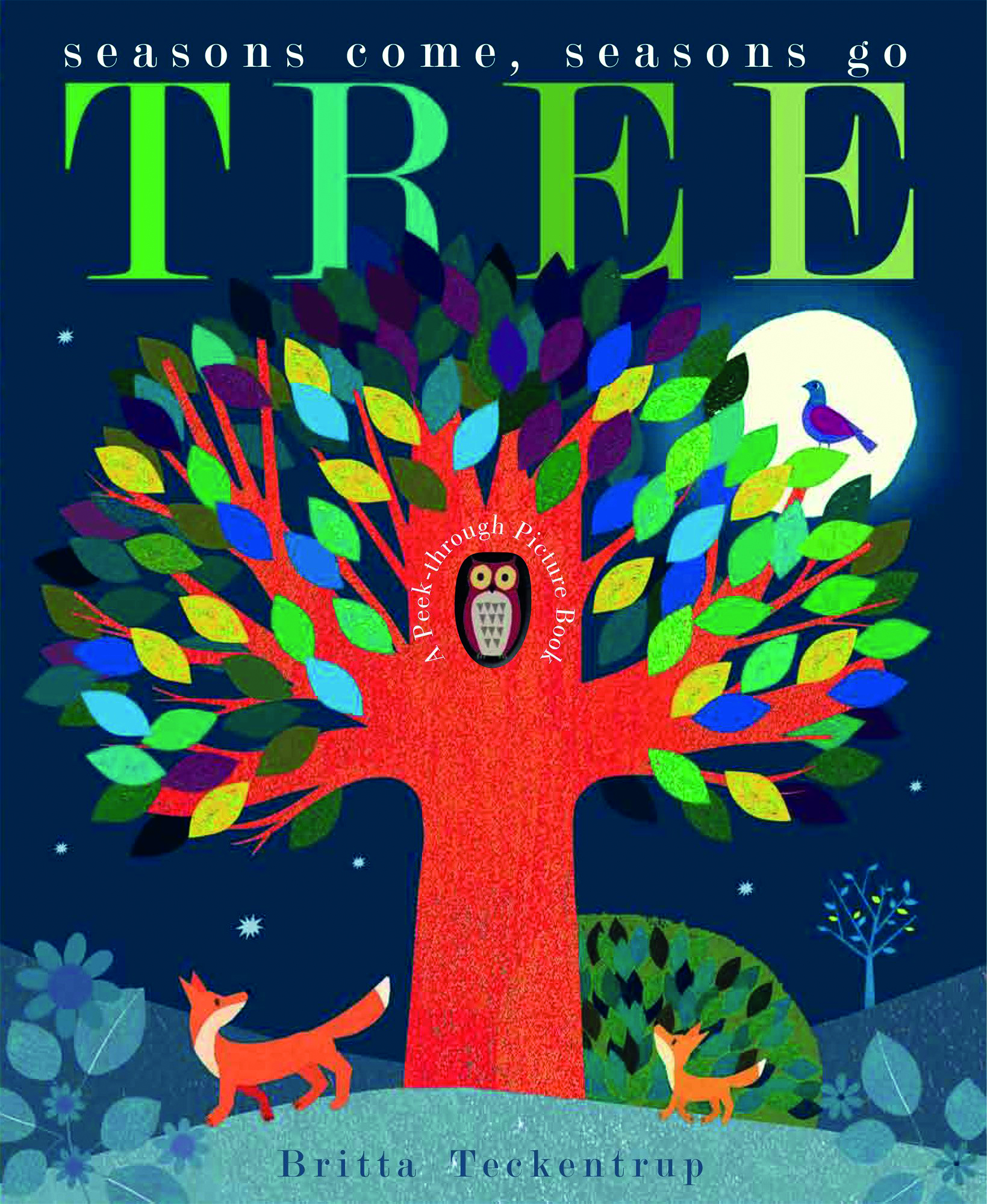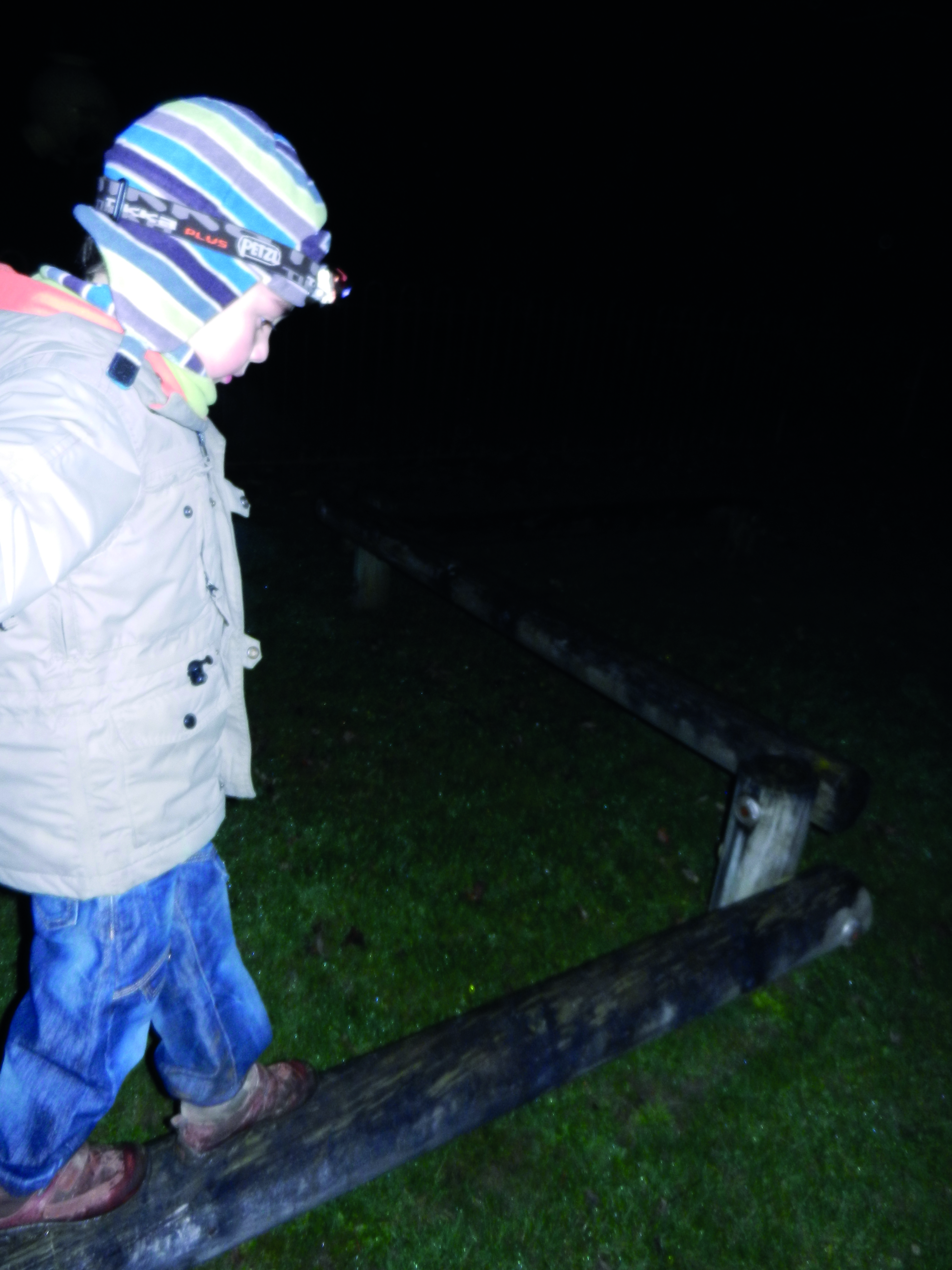
Activity
TREE DRESSING


By the time you read this, Tree Dressing Day may have passed as it’s always the first weekend in December. However, you can still share your work (and find others’) on Twitter with the hashtag #TreeDressingDay even after the event.
How you dress your trees will very much depend on the type and size of trees you have. Evergreens lend themselves to bright and gaudy dressings (a bit like Christmas trees), since natural materials are less likely to stand out against dark wintry branches. On the other hand, bare deciduous trees offer a skeleton form to work with, and children’s creativity can be set free with combinations of natural, found objects and a few light or brightly coloured objects.
Use the activity to develop fine and gross motor skills, creativity and collaboration, as children work together to reach higher branches and around trunks and fiddle with string, elastic bands and clips to attach their decorations.
- Make garlands from twine and found natural objects such as pinecones, conkers and shells – children could glitter-glue or spray a few of them to add sparkle.
- Drape coloured paper chains between the branches, or tie coloured ribbons along them.
- ‘Wrap’ the tree trunk or low branches with coloured wool, string, ribbons, crochet, knitting or strips of torn fabric.
- Construct bird feeder mobiles or wind chimes.
- Draw or paint replicas of the tree’s own leaves, onto stiff cardboard. Punch a hole in one end and suspend them from the boughs.
- Simple lanterns can be made using battery-operated tealights placed in jam jars, with wire twisted around the neck of the jar.
Find out more at Common Ground’s Tree Dressing Day webpage where there is lots of context and information about the cultural significance of important trees: https://bit.ly/3BW1l0A.
Nature watch
LOOK OUT FOR…
Disappearing leaves: Take a trip around the garden and choose a deciduous tree – it doesn’t have to be one in your garden, but you do need to be able to see most of it from the garden. Decide on a time of day, and take a photograph of the tree from the same place every day. Print out the photos and ask children to point out the changes they see, day to day. It is likely they won’t notice much difference to start with, but try showing the Monday or Friday photos only, or images from the first and last days of the month.
STEM spots: colour changes, leaf texture changes, the pace at which leaves are dropped, maths opportunities (e.g. half of the leaves are gone, most of them are gone, why aren’t all the leaves now on the ground below the tree?); compare leaf loss to other nearby trees, compare with evergreen trees – particularly, collect evergreen leaves and deciduous tree leaves and spot the differences.
Hedgehogs will be starting to hibernate. Check bonfires before lighting them, and check the middle of leaf piles before inviting children to enjoy jumping in them! If you can, collect leaves and pile them up somewhere out of the way to encourage hedgehogs to hibernate in your neighbourhood.
Maintenance
IT’S TIME TO…
Be winter water wise
- To prevent frozen pipes bursting over winter, turn off the supply to outdoor taps and pumps at the stopcock and leave the taps in the ‘open’ position.
- Once trees have finished dropping their leaves, clear out drains, gulleys and culverts.
- Standing water can be a health hazard, so think about resources that might not be much used over winter, and ensure water can’t ‘pool’ in them. If you’re covering sand or woodchips, consider uncovering them regularly to allow them to drain.
Litter pick
- Bare trees and shrubs expose litter that’s been hiding all year. Invest in a couple of long-handled litter-pickers so that children can collect and clear up safely.
Story to share

Tree: Seasons Come, Seasons Go by Patricia Hegarty, illustrated by Britta Teckentrup This story about a tree’s wildlife community through the year will work perfectly with Tree Dressing activities. The prose is written in rhyming couplets and the images are reminiscent of children’s collage pictures. Cut-outs allow peeks into the ecosystem of a deciduous tree and children will enjoy spotting recurring creatures. Like most of the books I’ve recommended, there are several videos of it being read on YouTube, but this is definitely one that children will want to handle themselves.
A new project
PLAYING OUT AFTER DARK

If you’re a wraparound setting, there will now be a few hours at both ends of the day when it’s dusky or dark outdoors. If your children aren’t with you after dark, why not consider hosting a few after-dark stay-and-play sessions. I’ve described this as a ‘project’ rather than an ‘activity’ because regular playing out after dark will need planning, resourcing and risk assessing. A good starting point would be this article I wrote for Nursery World (February 2018): https://bit.ly/3mUenHZ.
Resourcing should include some light sources, such as torches or glowsticks, but don’t rely on these all the time – much of the enjoyment for children is exploring by touch and sound and feeling that they themselves are hidden from view. Collect resources over time: plan to source donations and find items in charity shops and pound shops and keep them in a trug or grab’n’go box.
To fully appreciate the sensory delights of darkness play, you could:
- Create light sources: glowsticks; battery powered tealights; solar garden lights or fairy lights; headtorches and flashlights; fluorescent or glow-in-the-dark items such as balls and hi-vis reflectors.
- Focus on other senses: eat snacks outdoors in the dark, taste edible plants such as herbs, create a smelly trail, set up a rope trail to feel your way around, place sound-emitting objects around the garden (e.g. a phone’s metronome app or wireless speakers), feel the warmth from a campfire, crunch up bubblewrap sheets, feel the cold ground under your bare feet.
- Cuddle up together: create cosy dens or ‘hygge’ corners for stories or snacks outdoors, perhaps by utilising the spaces under tables, play equipment or bushes.
- Reimagine the familiar: learn how to negotiate play structures, pathways and loose parts in low light; use the hollow blocks or crates to make obstacle courses; lie on a thick blanket and watch the sky (this is great as a silent, contemplative activity as well as a launch point for conversations).
Resources
BEG, BUY OR BORROW…
Tree dressing: Almost anything can be used to decorate and celebrate trees outdoors, but ‘wrapping’ is an interesting technique that children might not have experienced. Ask parents for donations of fabric you can easily rip into strips – sheets and pillowcases are ideal, and it doesn’t matter if they are faded or torn.
Frosty bubbles: I’ve become very obsessed with Bubble Brothers’ amazingly strong and resilient bubble mix this year and can’t wait to try it out in frosty weather, when bubbles can freeze and be shattered! One pack costs around £3-4 but makes 5l of bubble ‘juice’ that really goes a long way: https://bit.ly/3qfexf5.
Looking ahead
MAKE PLANS FOR…
- The Winter Olympics are due to start in February 2022; why not make your own sledges and skis and snowboards, just in case we get decent snow in the UK? Or leave Tuff Spots outdoors with a few centimetres of water in on freezing nights so children find a mini curling rink to use the next day – just add brushes and pebbles!
- Ask parents and local businesses to save all sizes and shapes of timber for children to use to invent their own imaginative winter sports equipment.
Risk assessment
WATCH OUT FOR…
A Playing Out After Dark risk benefit assessment should include an analysis of how children are likely to use the space differently; think about what assumptions they make about their own movement and safety when they can easily visualise the space – how might that be different in the darkness? You may decide that some areas of the garden are out of bounds, at least until children are more confident moving around and negotiating hazards in low light. I use a glow-in-the-dark rope to indicate the boundary of After Dark play spaces – these are easily sourced online (try the Glow Company) and are inexpensive and huge fun to play with.
‘Our Garden in 2021’
FOR THE RECORD…
If you have been documenting your garden, discuss:
- what the trees you’ve ‘dressed’ for Tree Dressing Day looked like in spring and high summer, compared to now.
- improvements (or otherwise) to the features and resources outdoors.
- how the weather has changed over the year.
- how children themselves have changed – look at not just physical changes, but other indicators of change such as shoes or clothes (going up a size).
- what the children have enjoyed doing most outdoors this year – which places, spaces and resources do they love most?
- what the children might expect to see in the coming year.









